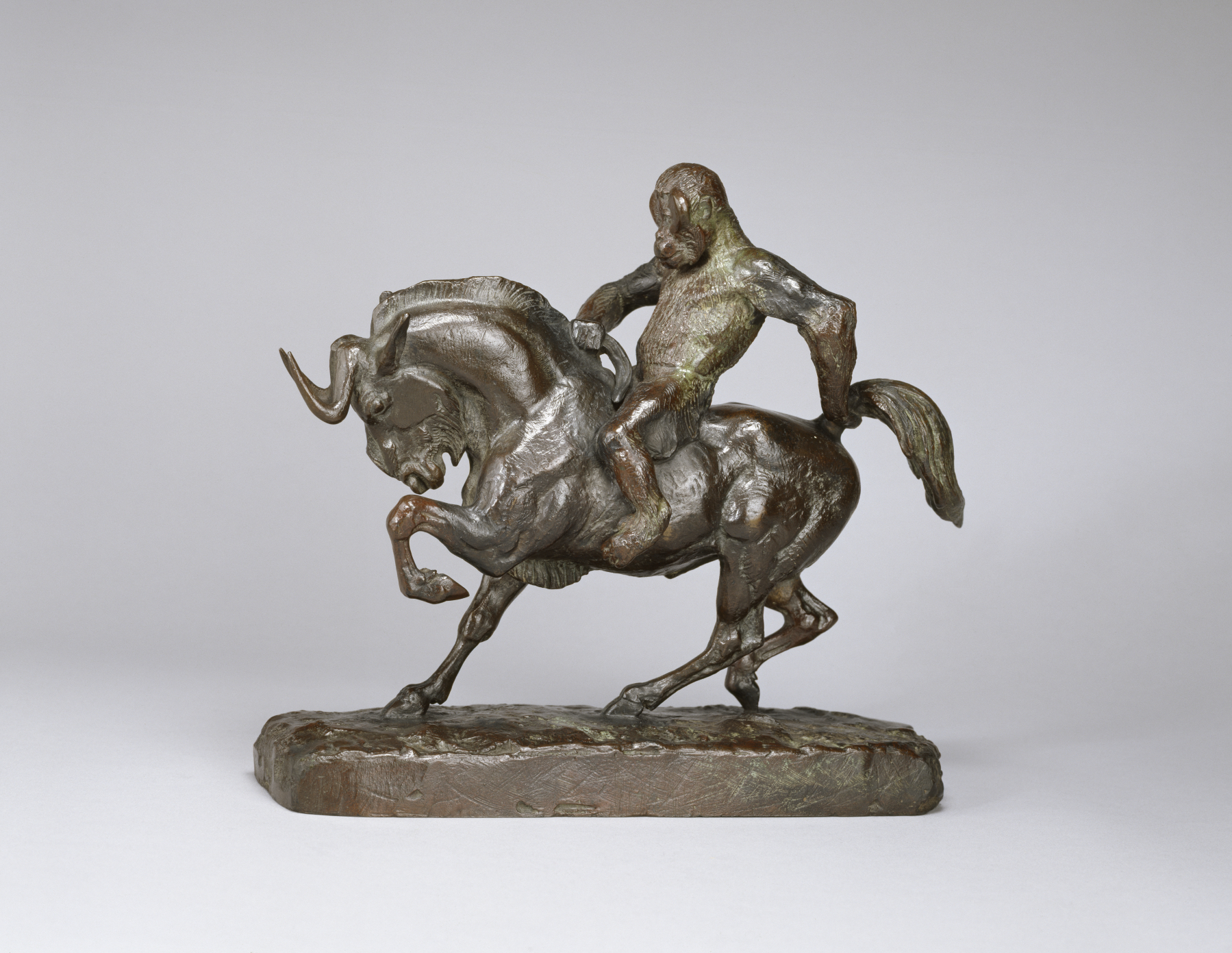Ape Riding a Gnu
(18th and 19th Centuries )
In this amusing sculpture, Barye parodies the tradition of the equestrian monument. An ape from Sumatra, Indonesia, named Jack rides on the back of an African antelope with buffalo-like antlers-a gnu or wildebeest. Jack arrived at the Jardin des Plantes in Paris in 1836 and survived for less than eight months. After taxidermy, its body became a popular sight for visitors to the Jardin's natural history museum. The composition is based on an engraving of the same subject by Thomas Landseer (1795-1880).
Inscription
Provenance
Provenance (from the French provenir, 'to come from/forth') is the chronology of the ownership, custody, or location of a historical object. Learn more about provenance at the Walters.
William T. Walters, Baltimore, prior to 1889; Henry Walters, Baltimore, 1894, by inheritance; Walters Art Museum, 1931, by bequest.
Exhibitions
| 2007-2008 | Untamed: The Art of Antoine-Louis Barye. The Walters Art Museum, Baltimore; Philbrook Museum of Art, Tulsa; The Henry Morrison Flagler Museum, Palm Beach. |
| 1889-1890 | The Works of Antoine-Louis Barye. American Art Gallery (New York), New York. |
Geographies
France, Paris (Place of Origin)
Measurements
9 1/2 x 10 3/4 x 4 1/8 in. (24.1 x 27.3 x 10.5 cm)
Credit Line
Acquired by William T. Walters, before 1889
Location in Museum
Not on view
Accession Number
In libraries, galleries, museums, and archives, an accession number is a unique identifier assigned to each object in the collection.
In libraries, galleries, museums, and archives, an accession number is a unique identifier assigned to each object in the collection.
27.121




